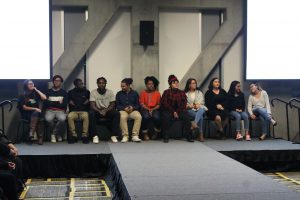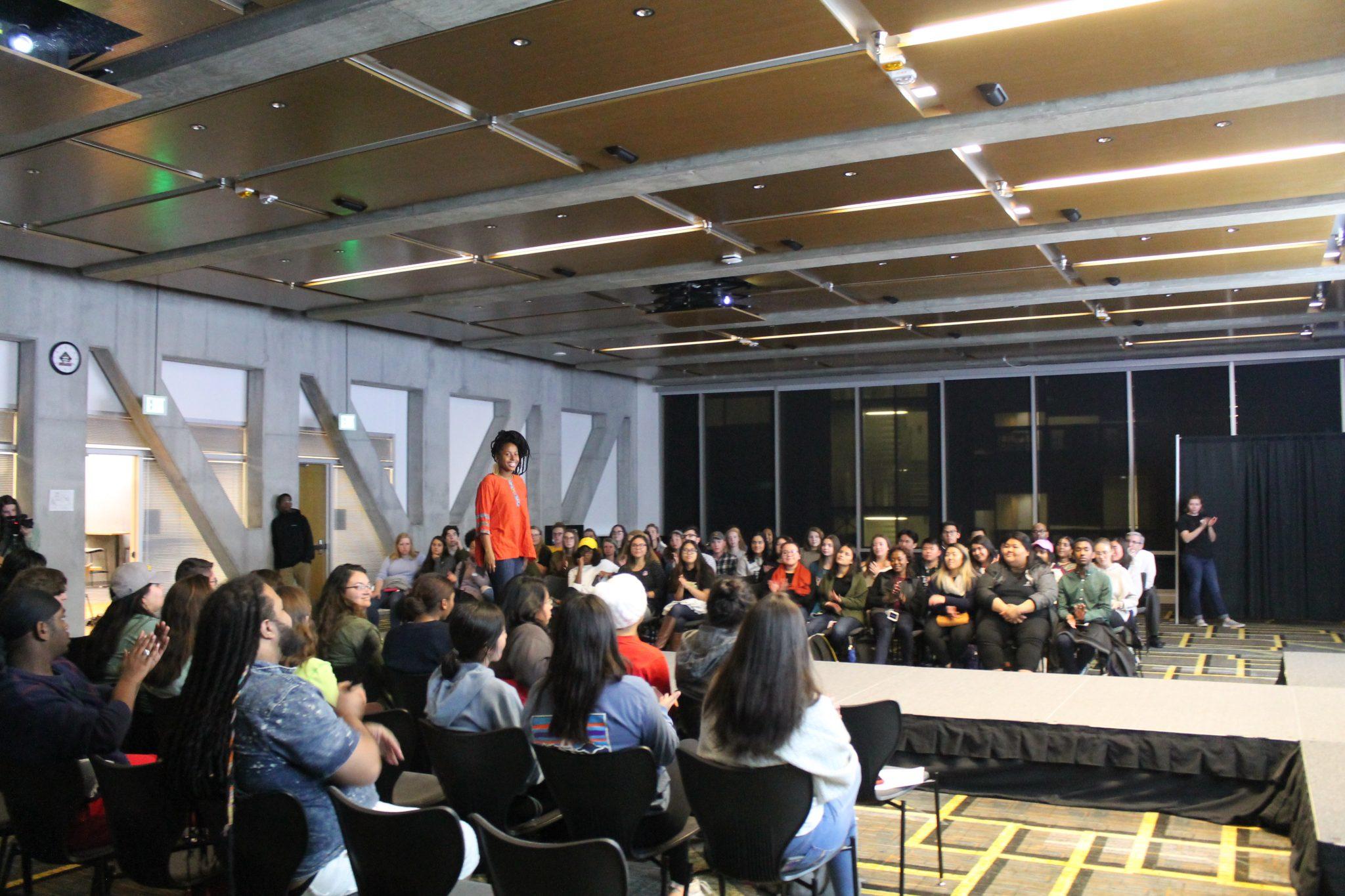The Parkway Ballroom stood still with only a dimly lit runway and a few silent chairs to keep it company. Minutes later the rustling of fabric and the chiming of elaborate handmade jewelry echoed through the hall as models shuffled in to hide their looks from the imminent crowd that would soon arrive. The models whispered encouraging words amongst themselves such as “I love your outfit” or “you’ve got this, just don’t fall.”
The night’s event Culture, Not Costume hosted by APPS aimed to distinguish the difference between cultural appropriation and cultural appreciation. The small college town of Boone suddenly lights up as students begin to prepare for the holiday’s festivities, a time when someone can truly become someone else.
However, social media platforms are littered with cases of appropriation during the days following Halloween. Many cultures see their traditional garments and beauty traditions degraded and their cultural significance diminished.
Culture, Not Costume brings together various multicultural campus organizations to explain that the traditional garments worn by various cultures are much more than a fashion statement or a costume, according to the event’s Facebook page.
The Hispanic Student Association walked out onto the stage in what Hillary Teoyotl, a senior political science major, called stereotypical cholo attire.
“Culture is how we connect with our own. When someone puts on some hoops and a flannel, buttons up the top and call themselves a cholo, they don’t know what that means,” Teoyotl said.
The meaning of the term cholo varies among individuals within the Latino community. However, the Oxford dictionary defines it as a derogatory term, identifying someone of Native or Indigenous-Latin decent or can also refer to a young Mexican-American man in a gang.
Rather than just being another accessory or piece of clothing that fills a closet, for some, what they choose to clothe themselves with represents more than just their personality. The tradition of bantu knots, hoop earrings, au dais, saris and dashikis represent an outward celebration and expression of cultural identity.
Elise Haylett, president of the Black Student Association is a junior psychology major and wears a headscarf almost every day.
“When I see a non-person of color wearing one I get confused because I don’t think they know why we wear them,” Haylett said.

Haylett continued to elaborate on her observations of the appropriation of black culture as seen not only during holidays such as Halloween but as she navigates through her daily life.
“People can wear headscarves or durags all day but when things start to get serious they can take off their costumes without having the connotations associated with blackness follow them,” Haylett said. “We, however, are stuck in the skin we’re in.”
After the show, the student organizations representing black, Asian, Native American and Latino student populations on campus held a panel discussing the many issues surrounding cultural appropriation through the context of fashion and beauty.
During the panel, these students revealed some of their personal experiences of sacrificing the integrity of their own cultures in an attempt to assimilate to western beauty standards.
“Black women have been ridiculed in the context of their hair for a very long time being told that natural is not professional or appropriate for the workplace leading us to straighten it,” Haylett said.
However, hairstyles such as cornrows or box braids have been popularised by celebrities, notably the Kardashians as Gaby Romero, a sophomore political science major and vice president of the Hispanic Heritage Association, said.
“They’re using their privilege to give styles like cornrows a cool or tough connotation when historically, people who wear them have been marginalized and targeted by police,” Romero said.
Molly Poole, president of the Native American Student Association and junior sustainable development major, predicts that this Halloween season there will continue to be headdresses littering the streets of Boone.
She references the site Yandy which has been under fire for their “sexy Native” costumes sparking backlash on Twitter.
“They refuse to take them off of their site,” Poole said.
Poole argues that American society has a “relationship with fetishisizing culture” and Boone in particular is guilty of this.
“Halloween is a hypersexualized holiday and it hurts deep down inside seeing dream catchers hung in peoples cars or in stores around Boone,” Poole said.
To wrap up the panel, attendees asked how one should confront someone who is guilty of culturally appropriating through their costumes this Halloween.
Tori Hunt, a Lumbee woman and sophomore chemistry major, took the mic and composed herself before speaking.
“There are times when I’ll be at a party or in public and I’ll hear the Indian War calls or see someone wearing a dreamcatcher on their shirt, and I’ll feel completely alone because I know no one is going to say anything,” Hunt said. “I am tired of policing people. It shouldn’t be up to us to educate you. If you don’t know enough about the culture, don’t wear it.”
Story by Savannah Nguyen, A&E Reporter
Photo courtesy of APPS
Feature Photo Caption: Elise Haylett models a dashiki, hoop earrings and Timberlands at the Culture, Not Costume fashion show hosted by APPS.

